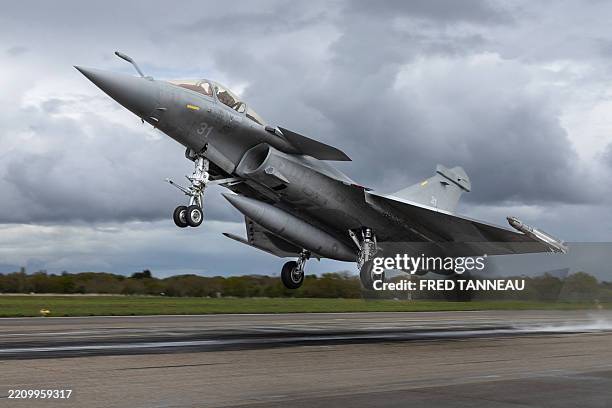What Happened in Syria? How Did al-Assad Fall?
What Happened in Syria? How Did al-Assad Fall?
The Syrian Conflict
The Syrian conflict began in March 2011. Pro-democracy protests erupted across Syria, inspired by the wider Arab Spring movement. President Bashar al-Assad’s violent crackdown on these protests escalated into a full-scale civil war. In the early hours of Sunday morning, opposition forces declared Syria liberated from the rule of President Bashar al-Assad as opposition forces surged into the capital.

Key Players
Government Forces: Led by Bashar al-Assad, supported by Russia and Iran.
Rebel Groups: Including the Free Syrian Army, supported by NATO and Gulf states.
Jihadist Groups: Such as ISIS and Hayat Tahrir al-Sham (HTS), which emerged from al-Qaeda’s Syrian affiliate.
Major Events
- 2011:Protests begin, leading to a violent government crackdown.
- 2012:The conflict escalates into a civil war.
- 2014:Russia and Iran intervene to support Assad.
- 2015:Rebel groups capture Raqqa and Idlib.
- 2024:HTS leads a final offensive, capturing Damascus and toppling Assad.
The Fall of al-Assad
In December 2024, HTS launched a decisive offensive. They captured Damascus, forcing Assad to flee to Moscow. This marked the end of his nearly 14-year rule.
Aftermath
The fall of Assad created a power vacuum. Various rebel groups now control different parts of Syria, and international calls for stability and unity have increased.
The Syrian conflict has been one of the most devastating in recent history. The fall of al-Assad represents a significant turning point, but the future of Syria remains uncertain.
The Syrian army faced a surprise offensive by Hayat Tahrir al-Sham (HTS) and its allies in late November 2024. The offensive began in Aleppo and quickly spread to other key cities like Hama and Homs. The Syrian army offered little resistance and collapsed quickly. HTS forces captured Damascus within days, leading to President Assad’s resignation and flight to Moscow.
The Syrian army has faced significant challenges over the years, and its strength has fluctuated due to various factors, including internal conflicts and external support. As of 2024, the Syrian army is ranked 60th out of 145 countries in terms of military strength, with a Power Index score of 1.0026. This score takes into account factors such as manpower, airpower, land power, and financial resources.
Regarding external support, both Iran and Russia have been key allies of the Syrian government. Iran has provided military advisors, equipment, and financial aid, while Russia has offered military support, including airstrikes and logistical assistance. Despite this backing, the Syrian army has struggled to maintain control over the entire country, especially with the recent fall of key cities like Homs and Aleppo.
Hayat Tahrir al-Sham (HTS) and its allies received support from several sources. Turkey is believed to have played a significant role, providing backing and coordination, despite official denials of direct involvement. Additionally, Qatar and Ukraine have been alleged to support HTS.
Other key groups involved in the Syrian conflict include:
Syrian National Army (SNA): An umbrella group of Turkish-backed militias.
Syrian Democratic Forces (SDF): A Kurdish-led coalition supported by the United States.
Noureddine el-Zinki: Initially backed by the U.S., later joined HTS.
Free Syrian Army (FSA): A coalition of various rebel groups.
These groups have different ideologies and goals, often leading to conflicts among them.
The opposition against Assad’s government has seen both coalitions and separate groups fighting on their own. Hayat Tahrir al-Sham (HTS) led a coalition that included Turkish-backed factions like the Syrian National Army (SNA). This coalition launched a coordinated offensive that led to the fall of Damascus.
However, many other groups have fought independently, often with their agendas and foreign backers. Groups like the Syrian Democratic Forces (SDF) and various factions within the Free Syrian Army (FSA) operated separately.
The most powerful group in Syria right now is Hayat Tahrir al-Sham (HTS). They led the offensive that captured Damascus and several other major cities. HTS, along with the **Syrian National Army (SNA)**, a coalition of Turkish-backed militias, managed to take control of key cities like Homs, Daraa, Queinetra, and Sweida.
HTS has roots in al-Qaeda and is considered a terrorist organization by the U.S. They have been the driving force behind the recent advances against Assad’s forces.
The leader of Hayat Tahrir al-Sham (HTS) is Abu Mohammed al-Julani. Born Ahmed Hussein al-Sharaa in 1982 in Riyadh, Saudi Arabia, he later moved to Syria with his family. Al-Julani joined al-Qaeda in Iraq in 2003 and was involved in the resistance against the U.S. invasion. He was arrested by U.S. forces in Iraq in 2006 and held for five years.
After his release, he returned to Syria and founded the Nusra Front, which later evolved into HTS. Al-Julani has distanced himself from al-Qaeda and focused on establishing an Islamic state in Syria. He has been a key figure in the Syrian conflict, leading HTS to significant victories, including the recent capture of Damascus.
Syria is home to a diverse mix of ethnic and religious groups. Here’s a breakdown of the main sects and their approximate proportions:
Sunni Muslims: Around 70-75% of the population.
Alawites: About 10-12%.
Christians: Approximately 10%. This includes various denominations such as Greek Orthodox, Syriac Orthodox, and Roman Catholic.
Druze: Around 3-4%.
Kurds: About 5-10%.
Other Muslim groups: Including Isma’ilis and Twelver Shi’as, make up about 2%.
Yazidis: Around 1%.
These percentages are approximate and can vary slightly. The ethnic and religious diversity in Syria has played a significant role in its history and current dynamics.
Iran’s support for Syria, despite it being a Sunni-majority country, is rooted in several strategic interests:
- Shia-Sunni Dynamics: Iran, a Shia-majority country, has sought to counterbalance the influence of Sunni-majority nations like Saudi Arabia. Supporting Assad, who belongs to the Alawite sect (a Shia offshoot), aligns with Iran’s goal of expanding its influence in the region.
- Strategic Alliances: Iran has long-standing alliances with various Shia groups and militias across the Middle East, including Hezbollah in Lebanon. Supporting Assad helps maintain these alliances and strengthens Iran’s regional power.
3. Geopolitical Interests: Syria’s location is strategically important, providing Iran with a foothold in the Levant and access to the Mediterranean Sea. This enhances Iran’s ability to project power and influence in the region.

As for Bashar al-Assad, he is not Sunni. He belongs to the Alawite sect, which is a branch of Shia Islam. This sectarian difference has been a significant factor in the Syrian conflict, as the majority of the population is Sunni.
Yes, Hayat Tahrir al-Sham (HTS) is predominantly a Sunni alliance. Most of the groups fighting against Assad were Sunni. The conflict has largely been framed as a Sunni majority uprising against the Alawite-led government of Assad.
Turkey has several key interests in Syria:
- Counter Kurdish Forces: Turkey is concerned about the presence of Kurdish groups, particularly the People’s Protection Units (YPG), which it views as an extension of the Kurdistan Workers’ Party (PKK), a designated terrorist organization. Turkey has conducted military operations to push back these groups and prevent them from establishing a foothold along its border.
- Influence and Power: Turkey aims to be a dominant regional power. Supporting rebel groups and influencing the outcome of the Syrian conflict allows Turkey to project its power and maintain a strategic presence in the region.
- Refugee Crisis: The Syrian civil war has led to a massive influx of refugees into Turkey. By supporting certain rebel groups, Turkey hopes to stabilize the situation in Syria and facilitate the return of refugees to their homeland.
- Economic Interests: Turkey has economic interests in Syria, including trade routes and access to resources. Stability in Syria is crucial for Turkey’s economic ambitions in the region.
Israeli Prime Minister Benjamin Netanyahu welcomed the fall of Assad, calling it a “historic day”. Israel’s involvement in Syria has been complex. While Israel has maintained a stance of neutrality, it has conducted airstrikes against Iranian and Hezbollah targets in Syria to prevent them from gaining a foothold. These actions indirectly weakened Assad’s regime and emboldened rebel groups.
Israel’s primary interests in Syria include minimizing Iranian and Russian influence, blocking the transfer of advanced weapons to Hezbollah, and preventing Syria from posing a military threat.
The fall of Bashar al-Assad in Syria has significant implications for various global players:
Israel
The collapse of Assad’s regime presents both opportunities and challenges for Israel. On one hand, it weakens Iran’s influence in the region, as Syria has been a key ally and conduit for transferring weapons to Hezbollah. This could isolate Hezbollah and reduce the threat it poses to Israel. On the other hand, the power vacuum could lead to instability and the rise of jihadist groups along Israel’s border, posing new security threats.
United States
For the U.S., Assad’s fall marks a pivotal moment in the Middle East. It could lead to a reshuffling of power dynamics in the region, with potential impacts on U.S. allies and interests. The U.S. has supported Kurdish forces in northeastern Syria, and the new political landscape could affect this relationship and lead to tensions with Turkey.
Russia
Russia, a staunch ally of Assad, faces significant losses with his fall. The loss of strategic bases in Khmeimim and Latakia weakens Russia’s military presence in the region. This could diminish Russia’s influence in the Middle East and impact its broader geopolitical strategies.
Turkey
Turkey stands to gain influence in the region with Assad’s fall, as it supports Sunni opposition forces. However, the rise of Kurdish groups in northeastern Syria could escalate tensions between Turkey and the U.S., given Turkey’s opposition to Kurdish empowerment.
The situation remains fluid, and the long-term impacts will depend on how these countries navigate the new political landscape in Syria.
Bashar al-Assad and his family have reportedly sought refuge in Moscow, Russia. The Kremlin has granted him political asylum, but his exact location remains undisclosed.
People celebrated the ouster of Assad’s government for several reasons:
people celebrate at Masnaa Border Crossing after Syrian rebels announced that they have ousted President Bashar al-Assad, Lebanon [Amr Abdallah Dalsh/REUTERS]
- End of Repression: Assad’s regime was known for its brutal repression, including widespread torture and human rights abuses.
- Hope for Change: Many Syrians see this as an opportunity for a fresh start and a chance to rebuild their country.
- Freedom from Dictatorship: Assad’s fall marks the end of over 50 years of authoritarian rule by the Assad family.
The celebrations reflect a mix of relief, hope, and the desire for a better future for Syria.
The chances of a peaceful transition of power and the establishment of a stable government in Syria are complex and challenging, given the presence of multiple groups and the history of conflict. However, there are some positive signs:
- International Support: The United Nations and various international actors, including the U.S., Russia, and Turkey, have expressed support for a peaceful transition. This global backing is crucial for stability.
- Transitional Government: A transitional government has been formed, with Mohammed al-Bashir as the designated Prime Minister. This government aims to draft a new constitution and hold free elections within 18 months.
- Preservation of State Institutions: Efforts are being made to preserve existing state institutions and ensure continuity in civil services. This approach aims to maintain order and prevent further chaos.
- Inclusive Political Process: There is a push for an inclusive political process that involves all Syrian factions. This inclusivity is essential for long-term peace and reconciliation.
While these factors provide hope, the road to stability will require sustained international support, cooperation among Syrian factions, and a commitment to rebuilding and reconciliation. It’s a delicate balance, but with the right efforts, a peaceful transition is possible.
: [ABC News](https://abcnews.go.com/International/where-is-bashar-al-assad/story?id=116570928)
: [MSN](https://www.msn.com/en-in/politics/government/former-syrian-president-bashar-al-assad-granted-political-asylum-in-russia-confirms-kremlin/ar-AA1vwOX7)
: [Daily Pioneer](https://www.dailypioneer.com/2024/world/syrians-celebrate-bashar-assad—s-exit.html)
: [MSN](https://www.msn.com/en-us/politics/government/syria-latest-syrians-celebrate-bashar-assad-s-fall-as-his-whereabouts-remain-unknown/ar-AA1vu0qM)
: [PBS](https://www.pbs.org/newshour/world/syrians-celebrate-end-of-assad-regime-with-jubilation-in-the-capital-and-outside-the-country)


